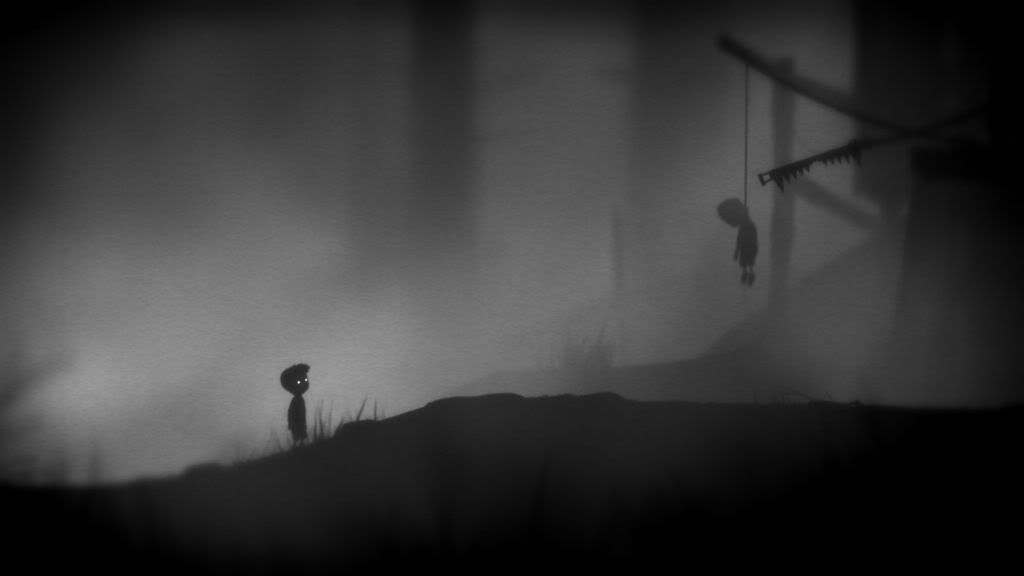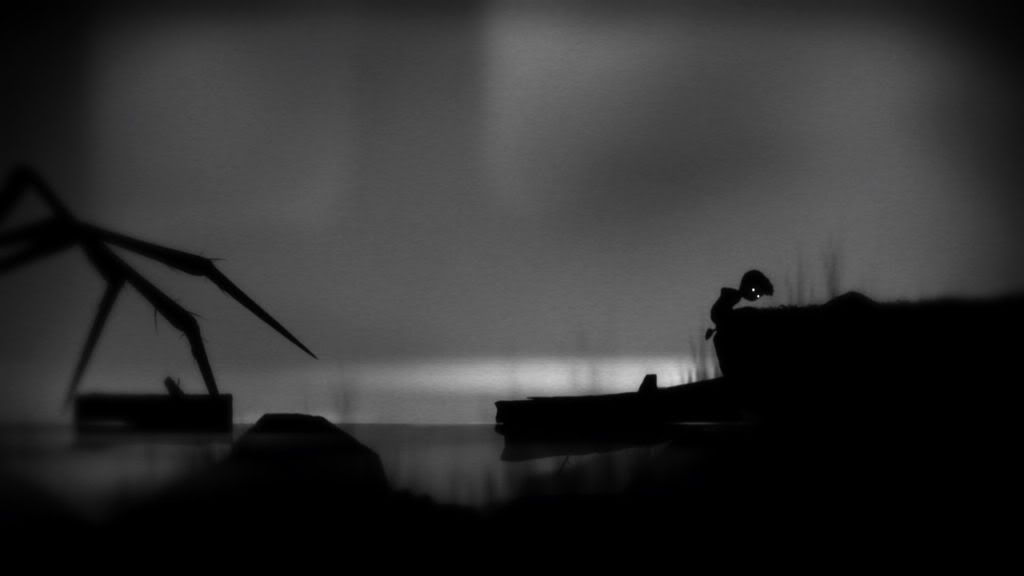
You are running through a forest, and not a soul to be seen around. It is eerily quiet; almost too quiet. Before you realize it, you come upon a gap. With a running start, you make a leap for the other side. The moment you leave the ground you realize you won’t make the distance, and begin hoping for a soft landing. Unfortunately, you land on a bed of wooden spikes, and die. Welcome to Limbo.
In Limbo, you control a young, nameless boy who wakes up in the middle of the forest. With almost no clue to where you are at, there is no other choice other than venture forward and figure it out as you go. There is no dialogue, and no cutscenes. There is only you, the boy, and the path ahead. Limbo leaves it in the players’ imagination to fill out the details of what is going on.
While Limbo may not have the traditional forms of storytelling or much of an actual story being told, it makes up for it with its amazing atmosphere. The moment you being playing, Limbo’s unique visual style will catch your attention. The entire game is presented largely with black silhouettes with mild lighting and a haze that permeates the air. With sparse bits of music, Limbo emphasizes ambient noise, particularly your own footsteps. It gives a very dark, brooding, macabre feel to the world that is just envelopes the experience. As you move through it, the world of Limbo feels dreary, and gives you a feeling that death is creeping up on you.

Of course, there is a good reason for this. You will die in Limbo, and die rather frequently if you are not cautious. You will be smashed, impaled, stabbed, drowned, electrocuted, etc. The world is full of traps and hazards of all sorts that will threaten your life. Each death usually occurs in gruesome fashion; some will make you jump and squirm, others will make you laugh at the (sometimes clever) situation that led to your downfall. While you may die again and again, it never feels frustrating thanks to very generous checkpoints that start you back off not far from where you met your demise.
As you and the boy progress through the world of Limbo, you will encounter puzzles and platforming challenges. Most sequences will make you really scratch your head as you think about how to move past, but are never so mind boggling that you need a degree in rocket science to find a solution. That moment when the light bulb goes off in your head when you see the solution is almost always satisfying.
However, knowing the solution and actually doing it are two separate things. Luckily, controlling the boy feels like second nature. He can climb objects, push/pull blocks, and jump as you would expect. While the boy may not have the jumping capability of Mario, he still moves around very naturally. The controls are also very responsive, which is wonderful considering any misstep on your part usually results in death.

One of the best aspects of Limbo is how varied the puzzles and hazards are. It will throw you a few that share a common theme or trick, but then switch it up just as you get acquainted with it. No one idea or gimmick is ever overused and the solutions always give you a feeling of relief that you are still alive. Even better is how natural the puzzles blend into or incorporate the environment. Some will even mesh together with the macabre tone of the game. You will watch as another boy runs into a body of water and drowns, yet you realize that the only way to not share his fate is to use the floating corpse as a stepping stone.
However, Limbo starts to run out of fresh ideas during the last quarter of the game. Rather than continue with creative environmental ideas, it transitions to using more straightforward hazards like large saw blades and gun turrets. It is also around this transition when the game loses a bit of the engrossing atmosphere. Whereas through the majority of the experience you are kept on edge wondering what sort of traps are hidden in the environment waiting to kill you; during the last sections of the game, that feeling of the unknown is largely diminished when you can clearly see death traps laying in wait.
Also, Limbo ends in a rather abrupt fashion. Throughout your travels, Limbo shifts between its varied environments relatively seamlessly and very naturally. However, the end of the game comes out of nowhere and the way it ends never really brings a full sense of closure to your adventure. It cheapens the experience with how it never really gives you meaning for surviving everything you went through.
Despite these small issues with the last parts of the game, Limbo is still a game worth playing through. Its unique presentation and atmosphere will keep a grip on you, while navigating the environment will keep you thinking about what will happen next. Death comes in many forms, and Limbo is an enthralling experience that focuses on that very idea.
|
+ Clever, varied puzzles + Dark, dreary atmosphere + Seeing just how the game is going to try killing you |
|
- Last parts of the game fall back on genre standbys - Sudden, abrupt ending |
Final Grade: B

I've only played the demo, but really want to pick this one up. A bit annoying to hear that the ending isn't so great, but I'm still excited to play it:)
ReplyDelete